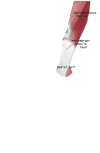Semimembranosus tendinopathy: one cause of chronic posteromedial knee pain
- PMID: 23015963
- PMCID: PMC3445062
- DOI: 10.1177/1941738109357302
Semimembranosus tendinopathy: one cause of chronic posteromedial knee pain
Abstract
Context: Semimembranosus tendinopathy (SMT) is an uncommon cause of chronic knee pain that is rarely described in the medical literature and may be underdiagnosed or inadequately treated owing to a lack of understanding of the condition.
Evidence acquisition: A search of the entire PubMed (MEDLINE) database using the terms knee pain semimembranosus and knee tendinitis semimembranosus, returned only 5 references about SMT-4 case series and 1 case report-and several relevant anatomical or imaging references.
Results: The incidence of SMT is unknown in the athletic population and is probably more common in older patients. The usual presentation for SMT is aching posteromedial knee pain. Physical examination can usually localize the area of tenderness to the distal semimembranosus tendon or its insertion on the medial proximal tibia. In unclear cases, bone scan, magnetic resonance imaging, or ultrasound may distinguish SMT from other causes of posteromedial knee pain. Treatment should begin with relative rest, ice, nonsteroidal anti-inflammatory drugs, and rehabilitative exercise. In the minority of cases that persist greater than 3 months, a corticosteroid injection at the tendon insertion site may be effective. Surgery to reroute and reattach the tendon is rarely needed but may be effective.
Conclusion: SMT is an uncommon cause of knee pain, but timely diagnosis can lead to effective treatments.
Keywords: knee; semimembranosus; tendonitis.
Conflict of interest statement
No potential conflict of interest declared.
Figures




Similar articles
-
Popeye sign of the semimembranosus.BJR Case Rep. 2018 Apr 30;4(3):20170122. doi: 10.1259/bjrcr.20170122. eCollection 2018 Mar. BJR Case Rep. 2018. PMID: 31489217 Free PMC article.
-
Distal semimembranosus tendinopathy: A narrative review.PM R. 2022 Aug;14(8):1010-1017. doi: 10.1002/pmrj.12667. Epub 2021 Aug 5. PM R. 2022. PMID: 34218525 Review.
-
Semimembranosus tendinitis: an overlooked cause of medial knee pain.Am J Sports Med. 1988 Jul-Aug;16(4):347-51. doi: 10.1177/036354658801600408. Am J Sports Med. 1988. PMID: 3189658
-
Congenital absence of the semimembranosus muscle: case report.Surg Radiol Anat. 2010 Jun;32(5):519-23. doi: 10.1007/s00276-009-0571-2. Epub 2009 Oct 8. Surg Radiol Anat. 2010. PMID: 19812883
-
Distal semimembranosus muscle-tendon-unit review: morphology, accurate terminology, and clinical relevance.Folia Morphol (Warsz). 2013 Feb;72(1):1-9. doi: 10.5603/fm.2013.0001. Folia Morphol (Warsz). 2013. PMID: 23749704 Review.
Cited by
-
What Is New about the Semimembranosus Distal Tendon? Ultrasound, Anatomical, and Histological Study with Clinical and Therapeutic Application.Life (Basel). 2024 May 15;14(5):631. doi: 10.3390/life14050631. Life (Basel). 2024. PMID: 38792649 Free PMC article.
-
Popeye sign of the semimembranosus.BJR Case Rep. 2018 Apr 30;4(3):20170122. doi: 10.1259/bjrcr.20170122. eCollection 2018 Mar. BJR Case Rep. 2018. PMID: 31489217 Free PMC article.
-
Is Dextrose Prolotherapy More Effective Than Steroids in the Treatment of Distal Semimembranous Tendinopathy?Cureus. 2024 Oct 1;16(10):e70663. doi: 10.7759/cureus.70663. eCollection 2024 Oct. Cureus. 2024. PMID: 39493165 Free PMC article.
-
A Rare Case of Juvenile Idiopathic Arthritis following a Ruptured Baker's Cyst in a Toddler.Case Rep Pediatr. 2020 Apr 6;2020:1601348. doi: 10.1155/2020/1601348. eCollection 2020. Case Rep Pediatr. 2020. PMID: 32318304 Free PMC article.
-
Adolescent Athlete With Semimembranosus Tendinopathy Requiring Operative Intervention: A Case Report and Review of the Literature.Orthop J Sports Med. 2023 Feb 2;11(2):23259671221147556. doi: 10.1177/23259671221147556. eCollection 2023 Feb. Orthop J Sports Med. 2023. PMID: 36756170 Free PMC article. No abstract available.
References
-
- Bollen SR, Arvinite D. Snapping pes syndrome: a report of four cases. J Bone Joint Surg Br. 2008;90:334-335 - PubMed
-
- Demeyere N, De Maeseneer MP, Van Roy P. Imaging of semimembranosus bursitis: MR findings in three patients and anatomical study. JBR-BTR. 2003;86(6):332-334 - PubMed
-
- Halperin N, Oren Y, Hendel D, Nathan N. Semimembranosus tenosynovitis: operative results. Arch Orthop Trauma Surg. 1987;106:281-284 - PubMed
-
- Hendel D, Weisbort M, Garti A. Semimembranosus tendonitis after total knee arthroplasty: good outcome after surgery in 6 patients. Acta Orthop Scand. 2003;74(4):429-430 - PubMed
LinkOut - more resources
Full Text Sources

